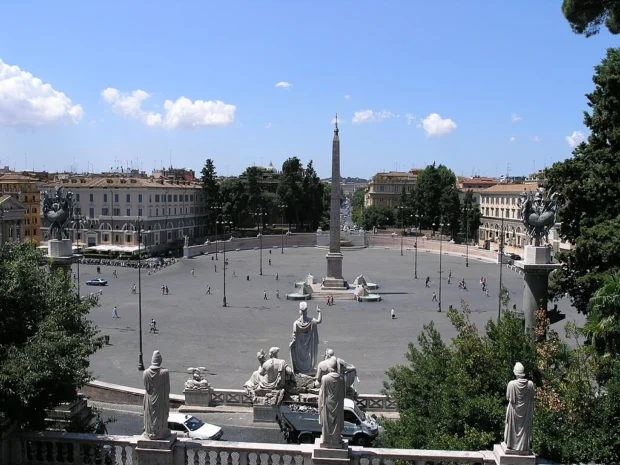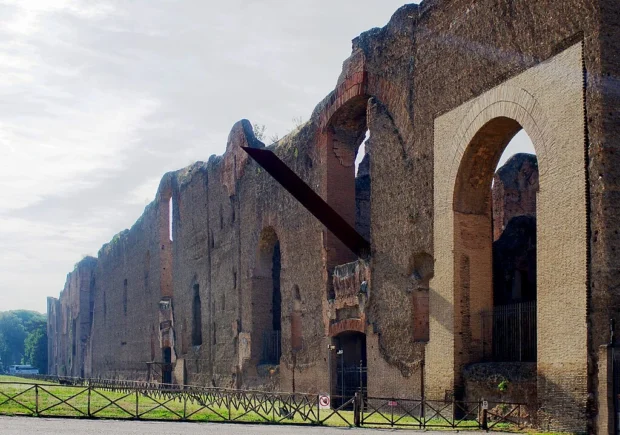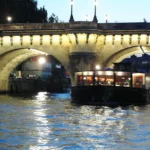Rome is not just a city of old stones and famous ruins. It is a place where history whispers in quiet piazzas and the taste of fresh bread fills narrow alleys. Walking through its streets, you encounter the layers of time-from ancient temples to bustling markets. This city invites you to slow down, listen, and feel its unique pulse. If you think of Rome only as the home of the Colosseum or Vatican City, wait till you meet the softer, everyday side of this grand old capital.
Table of Contents

Wandering Through Rome’s Iconic Landmarks
No visit to Rome is complete without seeing the grand wonders like the Colosseum, where gladiators once fought before tens of thousands of cheering crowds. This massive amphitheatre still stands as a powerful symbol of Roman entertainment and engineering. Nearby, the Roman Forum offers a walk through ruins where senators spoke and citizens gathered.
For those captivated by ancient Rome, a visit to the Colosseum experience adds a thrilling layer to understanding the city’s imperial heart.

Then there is the Vatican City-not just a religious city-state but an art treasure chest. St. Peter’s Basilica stands majestic with its enormous dome and marble interior, a place of great peace and power. A short walk brings visitors to the Sistine Chapel, where Michelangelo’s ceiling paints a divine drama you can stare at for hours. The history here reflects not only faith but art’s role as a storyteller.

Places Where Romans Breathe: Neighborhoods to Walk
Beyond monuments, the real pulse of Rome lives in its neighborhoods. Trastevere on the west bank of the Tiber River feels like stepping into a lively family gathering. At twilight, small trattorias fill with laughter and clinking glasses, and street performers charm the crowd. It is perfect for strolling and tasting dishes made from recipes passed down through generations.
Exploring Sofia’s rich blend of history and lively neighborhoods offers a fascinating contrast to Rome’s ancient streets—discover Sofia’s charm in detail here.
For those intrigued by the Vatican’s centerpiece, our guide on St. Peter’s Basilica offers insight into its beauty and how to visit.

Another favorite is the Monti district, a mix of artisan shops, vintage boutiques, and quaint cafés. It offers more than shopping-it is a meeting point for young Romans and tourists who want to feel part of the city’s creative spirit. The cobblestone streets themselves are an invitation to become part of a story still unfolding.

Taste of Rome: Flavors from Market to Table
Food is a window into Roman culture. The Testaccio neighborhood, once a hub for butchers and food markets, holds surprises for those who love hearty eating. Try the traditional coda alla vaccinara (oxtail stew) in a family-run place where recipes are never rushed. Food here is more than fuel; it is comfort and community.

Markets like Campo de’ Fiori reveal another side. Here, early mornings burst with fresh fruit colors, aromatic herbs, and curious conversations. Vendors share stories about their produce, making buying a small adventure. Don’t miss tasting supplì-fried rice balls with mozzarella-they are little crunchy delights found in many Roman shops.

Moving Around: Easy Ways to Navigate Rome
Rome’s public transport is efficient and connects key points smoothly. If arriving at Leonardo da Vinci Airport, the Leonardo Express train is the fastest link to the city center’s main station, Termini. From there, the metro and buses cover most tourist areas. While buses sometimes crowd during rush hour, they offer a good chance to glimpse local life through city windows.

Walking remains one of the best ways to fall in love with Rome. The compact historic center invites meandering. In the shadows of ancient walls, you might find a quiet bench or a gelato shop where time seems to slow. Just be sure to wear comfortable shoes-those steep hills and uneven pavement are part of Rome’s character.

The Gentle Rules: Customs and Courtesies in Rome
Roman culture, like its food and art, values respect and friendliness. When meeting someone for the first time, a polite “Buongiorno” or “Buonasera” goes a long way. It shows you care about more than just asking directions or ordering coffee. And speaking of coffee, remember that Romans usually drink cappuccino only in the morning. Ordering it late will get you a curious look!

A small but important tip: cover your shoulders and knees when visiting churches, including the Vatican. It is a gesture of respect to these sacred spaces. Also, avoid speaking loudly or using phones inside religious sites; quiet reflects reverence here.

Unexpected Wonders and Little-Known Corners
One evening, I found myself in the orange garden (Giardino degli Aranci) on Aventine Hill. This quiet spot offers breathtaking views of the city’s rooftops and the dome of St. Peter’s. Few tourists come here, so the silence feels rare, almost sacred. Nearby is the famous Keyhole of the Knights of Malta-a small hole in a door through which you see a perfect circle of Rome framed by trees. It’s a simple pleasure, but it captures the city’s secret loves for symmetry and surprise.

Another quiet find is the Basilica of San Clemente-a layered time capsule. Beneath the current church lies a 4th-century basilica and even older Roman buildings. Walking through its underground corridors feels like stepping back over millennia. Such places teach patience; here, history is found not only in grand statues but in walls and staircases.

Living Moments: Cafés, Markets, and Social Life
Roman cafés extend more than just warm drinks. They are hubs of conversation and contemplation. At dawn, locals gather at simple bars for a quick espresso and a chat. At sunset, people linger with a glass of wine or a slice of pizza bianca-plain, but addictive. The sense of belonging in these spaces is evident; they remind us that cities live in moments shared among friends and strangers.

Markets also reflect this social pulse. Try visiting Porta Portese flea market on a Sunday morning. Beyond shopping, it’s a place filled with banter, the mix of past and present, and the joy of finding unexpected objects. Even if you come empty-handed, the energy is memorable.

Final Reflections on Rome’s Ever-Beating Heart
Rome is more than a collection of famous places. It is a city that invites us to listen-to the stone, to the people, to the flavors cooking in tiny kitchens. It teaches that history is alive, shaped not just by emperors or artists but by everyday moments of kindness and curiosity. So, whether wandering ancient ruins or sipping coffee by a fountain, Rome quietly asks you to join its story, one step and one breath at a time.

Lover of cities, local cafés, and historic streets, exploring urban life with attention to architecture and culinary delights.
- Colosseum in Rome, Italy – April 2007 by Diliff on Wikimedia Commons – cc by-sa 2.5
- Colosseum, Rome, Italy (Ank Kumar) 03 by Ank Kumar on Wikimedia Commons – cc by-sa 4.0
- 11826 – Vatican – Chiaramonti Museum (3482086595) by xiquinhosilva on Wikimedia Commons – cc by 2.0
- Pantheon (Rome) – Right side and front by NikonZ7II on Wikimedia Commons – cc by-sa 4.0
- Italy-0175 – St. Peter's Basilica at Night (5137442385) by Dennis G. Jarvis on Wikimedia Commons – cc by-sa 2.0
- 09749 – Rome – Roman Forum (3504237825) by xiquinhosilva on Wikimedia Commons – cc by 2.0
- Rome, Italy, The Trevi Fountain (Fontana di Trevi) by Vyacheslav Argenberg on Wikimedia Commons – cc by 4.0
- Piazza Navona 1 by Myrabella on Wikimedia Commons – cc by-sa 3.0
- Castel Sant'Angelo-Rome by Joseolgon on Wikimedia Commons – cc by 4.0
- Rome Trinita dei Monti 2020 P12 Spanish Steps by Fallaner on Wikimedia Commons – cc by-sa 4.0
- Basilica di Santa Maria Maggiore – 8 by Maros M r a z (Maros) on Wikimedia Commons – cc by-sa 3.0
- Piazza del Popolo (Roma, Italy) by WolfgangM on Wikimedia Commons – cc by 2.0
- Via de la Scala, Trastevere, Roma, Italia, 2022-09-16, DD 17 by Diego Delso on Wikimedia Commons – cc by-sa 4.0
- Capitoline Hill (16928436702) by Henning Klokkeråsen from Oslo, Norway on Wikimedia Commons – cc by 2.0
- 10 2023 – Terme (Baths of) Caracalla, Arte Romana, Viale Guido Baccelli, Rome, Roma, Lazio, 00154, Italy – Photo Paolo Villa – FO232084 ombre privacy prospettiva gimp – Ingresso – arco-volta by Paolo Villa on Wikimedia Commons – cc by-sa 4.0
